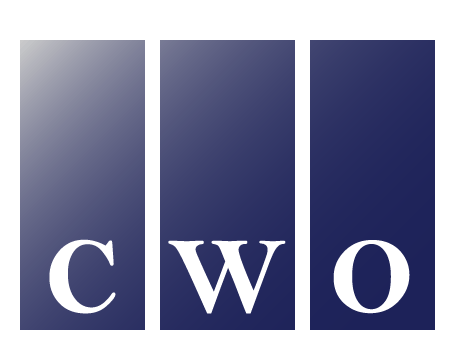
Filing Form 5500-EZ for your Self-Employed 401(k) Plan
There’s good news if you’re a solo entrepreneur or self-employed individual and want to enjoy the benefits of a 401(k) retirement plan: Congress has created a special type of 401(k) plan just for you.
Known as a Self-Employed 401(k) or a solo 401(k), this plan is similar to a regular 401(k) except that it isn’t subject to the rules of the Employee Retirement Income Security Act (ERISA). This greatly simplifies the plan and makes it more affordable for self-employed individuals and solo entrepreneurs.
What Makes Solo 401(k) Plans Simple?
One of the things that makes Solo 401(k)s simpler is that, depending on the plan’s size, you may not have to file Form 5500 annually with the Department of Labor (DOL) like you do with a regular 401(k) plan. Form 5500 provides the DOL and the IRS with information about the plan’s financial condition, operations, investments and compliance with government regulations.
However, if your solo 401(k) had $250,000 or more in total assets during the previous calendar year, or if last year was the final year of your plan, you must file a different version of Form 5500. Fortunately, this version — Form 5500-EZ — is much simpler than the regular Form 5500 and can usually be completed in less than one hour. Form 5500-EZ is an information-only filing that will report the amount of your Solo 401(k)’s annual holdings to the DOL and the IRS.
According to the IRS: “Form 5500-EZ is used by one-participant plans and foreign plans that are not subject to the requirements of section 104(a) of the Employee Retirement Income Security Act of 1974 (ERISA) and that do not choose to file Form 5500-SF electronically to satisfy certain annual reporting and filing obligations imposed by the Code.”
Form 5500-EZ Filing Deadline
You must file Form 5500-EZ by the last day of the seventh month after the end of the plan year. For most plans, this will be July 31. Form 5500-EZ is filed for the previous calendar year, so if your plan is new and was just set up this year, you won’t need to file the form until next year.
For example, let’s say that your Solo 401(k) plan year ends on December 31. If your plan has $300,000 in assets on December 31, 2024, you will be required to file Form 5500-EZ by July 31, 2025.
So how do you know the total plan asset value of your Solo 401(k)? You will simply add all the assets in the plan, including all investments, bank and brokerage accounts, real estate, and private lending where the Solo 401(k) was the borrower. Any outstanding plan loans at the end of the plan year should be included in the calculation. Keep your plan adoption agreement and a record of your cumulative plan assets handy as you do the calculation.
According to the IRS: “Total plan assets include rollovers and transfers received from other plans and unrealized gains and losses such as appreciation/depreciation in assets. They also include specific assets held by the plan at any time during the plan year, employer securities, loans (participant and non-participant loans) and tangible personal property.”
Your financial advisor may be able to help you determine whether your assets have reached the $250,000 threshold for the current plan year and you need to file Form 5500-EZ. Your advisor might be able to file the form on your behalf if your assets are held with the advisor.
Electronic Filing of Form 5500-EZ
Form 5500-EZ can now be filed electronically for plan years beginning after 2019 using the IRS online filing platform EFAST2. You’ll need to include certain specific information when filing Form 5500-EZ, including the following:
- The type of return you are filing
- Basic plan information such as the plan name, your Employer Identification Number (EIN) and the plan administrator’s name and EIN
- Financial information including total plan assets and liabilities
- Plan characteristics; and
- Answers to compliance and funding questions like whether there were any participant loans made during the plan year.
You don’t have to file schedules or attachments related to Form 5500-EZ, but there are two schedules you must collect and retain:
- Schedule MB (Form 5500), Multiemployer Defined Benefit Plan and Certain Money Purchase Plan Actuarial Information
- Schedule SB (Form 5500), Single-Employer Defined Benefit Plan Actuarial Information
Getting a Form 5500-EZ Filing Extension
If you need more time to file Form 5500-EZ, you can apply for a one-time deadline extension by completing and filing Form 5558. As long as this form is filed on or before the normal due date, you will automatically receive an extension until the 15th day of the third month after the original due date.
The penalties for not filing Form 5500-EZ or filing late can be severe: $250 per day up to $150,000, plus interest. However, you might be eligible for penalty relief under Revenue Procedure 2015-32. There is a fee of $500 per delinquent return, up to $1,500 per submission, for the same plan.
How We Can Help Your Business
The team at C.W. O’Conner Wealth Advisors can help you determine if you need to file Form 5500-EZ and perhaps file the form on your behalf. Call us directly at 770-368-9919 or email Cliff at [email protected] or Kevin at [email protected] to learn more.
Editor’s Note: This article was originally published on February 20th, 2020. It has been updated to provide a more comprehensive resource about Form 5500-EZ.
Download our 2025 Financial Planning Guide







